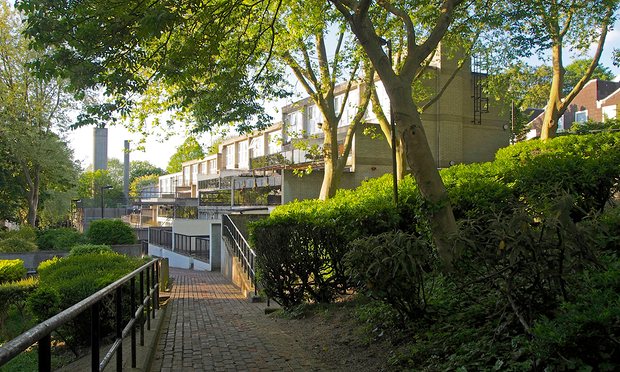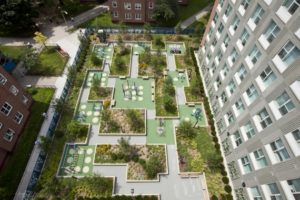
The Importance of Outside Space in Social Housing
A home is much more than the four walls that surround us; a home is about the environment in which people live their lives, eating, sleeping, bringing up their families and even working. It is the view from the window and what we see when we go out of the door; it extends outwards from our nest to include our neighbours.
Whilst estate agents have long realised how important outside space is to house buyers it is only recently that the social housing designers have realised that the design of the outside space can influence the health and wellbeing of tenants and impact significantly on their coming together as a thriving community. It takes more than one small play park to build a community – it takes safe, clean, energising natural space.
Research in 2010 by the Chartered Association of Building Engineers (CABE) showed that people living in deprived areas are more likely to have a poorer-quality local environment with less access to attractive green space.
Following the research CABE came together with the National Housing Federation, social landlords and associated organisations to develop a practical action plan that sets out 10 priorities for change in delivering green spaces in social housing. The Neighbourhoods Green partnership is working with social housing providers to take these actions forward.
The Ten Point Plan

- Commit to quality – make a commitment at the highest possible level to green space provision. Leading from the top will promote a culture change in how organisations and residents view and value these spaces.
- Involve Residents – encourage local residents of all ages to be engaged in deciding how their green spaces will be planned and looked after.
- Know the Big Picture – take a strategic approach when planning open spaces, find out who owns what and plan a combined development strategy, it’s easier to implement that way and take advantage of expert help from Natural England and the Landscape Institute.
- Make the best use of funding – secure and co-ordinate different sources of funding by making the most of partnerships and opportunities One joint working project recently secured £15.6 million from the Big Lottery Fund’s Changing Spaces programme to regenerate over 70 open spaces in social housing areas across England.
- Design for Local People – Children under 16 account for approximately 20 per cent of the population and on social housing estates the proportion can rise to over 50 per cent. Take into account the needs of your local population and develop a well thought out brief that gives them what they need.
- Develop training and skills – Motivate tenants and staff through open space training opportunities. Creating high quality green spaces requires highly trained staff to build and maintain them and the industry needs people now, offering training locally builds sustainable futures for people.
- Maintain high standards – Ensure that the maintenance and long term management of green spaces is considered essential. This means having and keeping to a management plan and seeking awards that recognise the commitment to developing the green spaces.
- Make places feel safe – Improving the design of local outside spaces changes user behaviour and encourages safer environments.
- Promote healthy living – Well maintained, pleasant and attractive outdoor spaces encourage activity Research shows that it’s the green spaces closest to where people live that bring the most health benefits. Natural England recommends that people should have an accessible natural green pace within five minutes of their home.
- Prepare for climate change – The greening of urban environments forms an essential part of preparing for climate change, protecting residents from flooding and heat waves.

Leave a comment